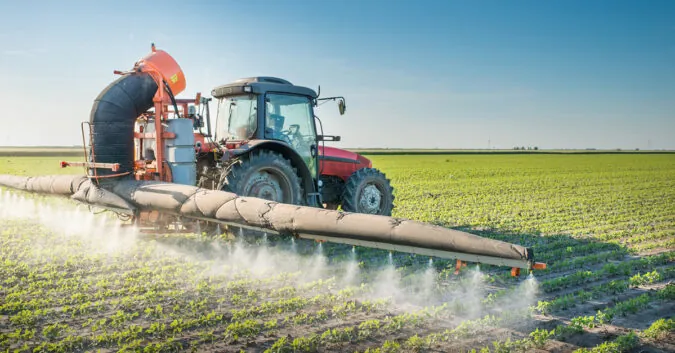Raleigh, NC: (919) 277-9299

When herbicide manufacturers explain what paraquat is, they say it’s a safe chemical for weed and grass control, but farmers know it’s a top agricultural hazard. Gramoxone, also known as paraquat, is an herbicide sold under many brand names that has long been applauded for its efficacy but feared for its toxicity. This compound hit the market in the 1960s and became a go-to product for the agricultural industry because it controlled resistant vegetation around commercial farmlands and vineyards. Unfortunately, too many of its users were misled by the product’s label that didn’t provide adequate health warnings.
It took decades for people to understand the hazards of paraquat dichloride-containing herbicides and even longer for Federal Regulation to curb paraquat use. Until this substance is banned in the United States, agricultural workers and commercial landscapers must understand what paraquat is, what brand names it is sold under, how it is used, and how to minimize their exposure to it.
What Paraquat Is (and What It Isn’t)
While manufacturers of paraquat-dichloride containing products want you to believe that paraquat is perfectly safe—it isn’t. Paraquat is toxic: breathing its fumes and handling the concentrate can have devastating effects. Dermal exposure and inhalation cause toxic chemical reactions to occur in the body, and cause cellular damage and epigenetic changes to organs and the central nervous system.
Reducing Your Risk of Paraquat Exposure
The Environmental Protection Agency (EPA) has slowly increased measures to reduce people’s exposure to paraquat-dichloride herbicides and the risk of Parkinson’s disease, but safety campaigns came too late for many. Awareness training and application limits started in earnest in 2016—about 50 years after paraquat was introduced on the market. This left people living and working in agricultural areas uninformed and at risk. Debilitating health conditions, like Parkinson’s disease, have affected thousands of agricultural workers.
Occupational Contact With Paraquat
The application of paraquat is a common weed control method in crop fields all over the U.S. where cotton, soybeans, almonds, grapes, rice, wheat, potatoes, and alfalfa are grown. Nearly every crop farmer is a potential user, and their employees working in and out of the fields are at risk of exposure. Prior to 2019, when the EPA approved training requirements, many agricultural workers’ occupational exposure to paraquat mostly went unchecked. Additionally, the product labels did not advise these workers that direct contact with paraquat dichloride-containing herbicides while spraying in fields, handling treated crops, or maintaining spraying equipment could have irreversible health effects.
Today, certified applicators are most at risk of exposure because these are the only professionals allowed to use paraquat. Under these regulations, ‘paraquat use’ means pre-application tasks, like mixing and loading, applying commercial herbicides, and any activity related to transporting, cleaning, and handling paraquat-containing materials. Since older bottles are not marked as restricted use, these safety measures are limited.
What Products Contain Paraquat?
Paraquat dichloride-containing herbicides are sold under many brand names, including Gramoxone, Quick-Quat, Parazone, Helmquat, Para-Shot, Cyclone, and Firestorm. Identifying products that contain paraquat is one way to protect yourself, but you shouldn’t judge by the brand name alone; you will want to read the label and review the ingredients to be certain. Anyone working or interacting in agricultural environments should understand that packaging varies and safety warnings may be lacking on certain containers.
Manufacturers of paraquat have proven they are more interested in selling products than in protecting its users from harm, so no one should rely on the packaging for safety guidance. People must learn how paraquat is used where they work or live and how it may be putting them in danger of developing Parkinson’s disease. As diagnoses of this movement disorder continue within the agricultural community, the number of lawsuits against companies producing these commercial herbicides grows.
